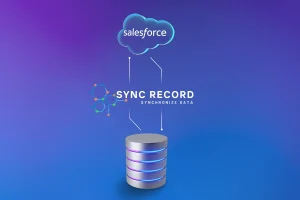Technology makes change the order of the day. Lagging behind that change quickly creates problems. But how do you ensure that as a large organization you are still able to change quickly? You have to be not only efficient, but above all agile. For large companies, this often seems like an impossible task. But what if your company, despite its size and complexity, becomes not only more agile, but also a place where work becomes faster, easier AND more fun? With the Agile way of working - for example in implementations of new software - that is exactly what we are going for.
Why Agile?
Agile is more than a buzzword in the IT world. It’s a way of working that changes the way teams work together. Instead of spending months working on a project with no clear view of the end result, Agile is all about small, manageable steps. This ensures that teams see results faster, which is not only motivating, but also directly contributes to better products and services.
For large-scale organizations, Agile offers the ability to break down big plans into manageable chunks. This means that instead of being swallowed up by complexity, you can achieve small successes that lead to big progress each time.
Compare it to a 2.5-meter high fence you have to cross. Seems impossible, but if you break it down into small steps (run-up, hands over the top, one armpit over the top, one leg over it, flat on your belly over it, dismount) you’ll be over it before you know it and with minimal effort. We do the same for large software implementation projects.
Bigger is not always more complicated with Agile working
When you think of large organizations, you probably think of layered hierarchies and slow decision-making. Agile breaks through this. By working in smaller, autonomous teams, your organization can move quickly and respond to change. The beauty? The core principles of Agile – collaboration, flexibility and customer focus – remain intact, regardless of scale.
With frameworks like Scaled Agile Framework (SAFe) and Large Scale Scrum (LeSS), even the largest organizations can reap the benefits of Agile. These frameworks help you organize teams to work quickly and efficiently, without the need for endless meetings and approval processes.
The human factor: agility for job happiness
Agile is not just a set of rules. It is a culture change that starts with people. When employees are given the space to make their own decisions and take responsibility, their engagement and job satisfaction increases. This is critical to the success of an Agile transformation.
A culture of agility also means that failure is not a taboo, but an opportunity to learn. Instead of avoiding mistakes, Agile teams embrace them as a natural part of the learning process. This creates an environment where innovation thrives and employees feel free to explore new ideas.
In addition, the Agile methodology makes work easier by setting clear priorities. Teams know exactly what is expected of them and can focus on what is really important. This reduces stress and makes work not only more effective, but also more enjoyable.
Reducing complexity: the art of simplification
In large organizations, complexity often seems inevitable. But thanks to our Agile working methodology, we manage complexity precisely by breaking down projects into smaller, manageable pieces. This is not only a strategy to reduce workload, but also makes it easier to identify and solve problems early on.
One of the core principles of Agile is continuous integration (CI). This means that teams continually integrate and test their work so that problems quickly surface. This not only speeds up the development process, but also ensures a higher quality of the final product.
Moreover, by using visual management tools such as Kanban boards or Scrum boards, teams always keep track of progress. This makes it easier to identify bottlenecks and take immediate action.
Agility gets you ahead faster
In the modern business world, agility is not just a strategy but a survival mechanism. The more efficient you can work, the more attention you can pay to your customers. Large-scale organizations that embrace Agile are discovering that not only can they respond faster to change, but the work also becomes more fun and satisfying for everyone on the team.
By implementing Agile the right way, you transform your organization into a place where innovation, collaboration and job satisfaction are key. And that’s not only good for your employees, but for your organization as a whole.

Ask our specialists
Feel free to contact Arnd Jan Prause, Founder and Consultant at musQueteer, if you would like to learn more about Agile working.


